Chinese Mahjong is a strategic tile-based game originating from China, typically played by four players. The objective is to complete sets and pairs by drawing and discarding tiles. Official rules and scoring systems are detailed in guides like the Mahjong Competition Rules PDF, which outlines traditional and modern variations for both beginners and advanced players.
What is Mahjong?
Mahjong is a traditional Chinese tile-based game that combines strategy and skill. Originating in China, it is typically played by four players. The game involves a set of tiles with various symbols, including numbers, bamboo, circles, characters, dragons, winds, flowers, and seasons. Players aim to form valid sets and runs, drawing and discarding tiles to create combinations. Mahjong is similar to games like Gin Rummy, focusing on completing sets and pairs. The game has regional variations, but the core objective remains consistent: to be the first to declare “Mahjong” by forming a valid hand. The rules and scoring systems are detailed in official guides, such as the Mahjong Competition Rules PDF, which outlines both traditional and modern gameplay.
Origins and History of Mahjong
Mahjong has a rich history rooted in China, with its origins tracing back to the Qing dynasty. The game evolved from earlier card games and became popular in the mid-19th century. Its name, meaning “sparrow,” reflects its fast-paced nature. Initially played among the elite, Mahjong spread globally, adapting to regional cultures. The Mahjong Competition Rules PDF details its evolution, including how it became a competitive sport with standardized rules. Today, Mahjong is enjoyed worldwide, blending traditional elements with modern variations, making it a timeless classic in gaming history. Its enduring appeal lies in its unique blend of strategy, skill, and cultural significance.
Why Learn Chinese Mahjong Rules?
Learning Chinese Mahjong rules offers a gateway to a centuries-old game of strategy and skill. It enhances cognitive abilities, improves memory, and fosters social connections. The Mahjong Competition Rules PDF provides a clear guide for mastering the game, detailing scoring systems and gameplay mechanics. Understanding these rules allows players to appreciate the game’s depth and complexity. Whether for casual play or competitive tournaments, knowing the rules ensures a more enjoyable and rewarding experience. Additionally, Mahjong’s global popularity makes it a valuable skill for connecting with diverse cultures and communities. Embrace the challenge and discover why Mahjong remains a beloved pastime worldwide.
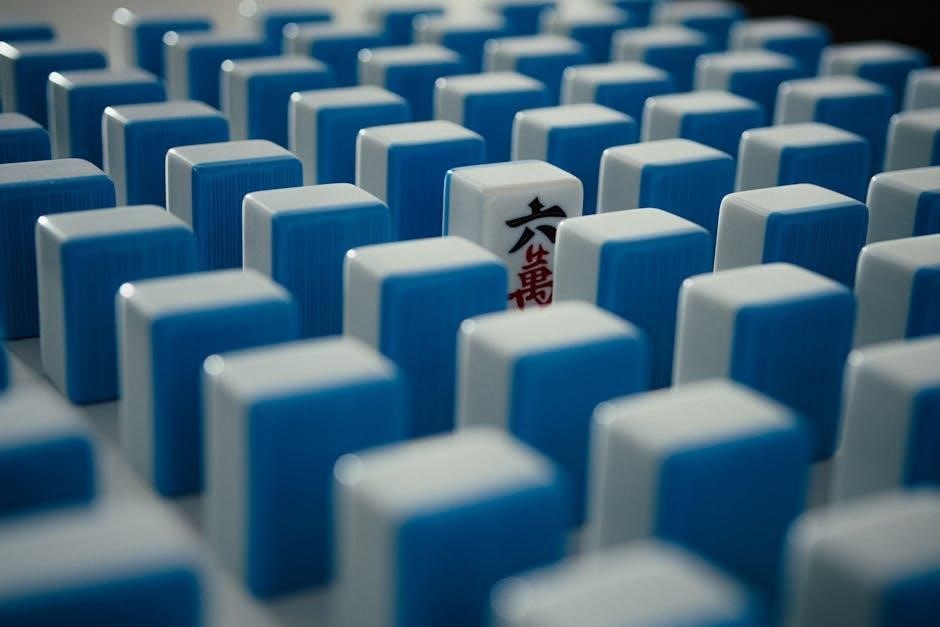
Basic Components of Mahjong
Mahjong consists of 144 tiles, divided into suits (bamboo, circles, characters), honor tiles (winds, dragons), and optional flower/season tiles. The Chinese Mahjong rules PDF details their organization and usage in gameplay.
Types of Mahjong Tiles
Mahjong tiles are categorized into three main suits: bamboo, circles, and characters, each representing numbers 1-9. Honor tiles include winds (east, south, west, north) and dragons (red, green, white). Flower and season tiles are optional. The Chinese Mahjong rules PDF outlines their symbols and values, ensuring clarity for players. These tiles form the foundation of sets and runs, essential for winning. Each tile type has unique scoring and gameplay rules, as detailed in official guides. Understanding tile types is crucial for mastering the game, as explained in the Mahjong Competition Rules document. Proper tile recognition enhances strategic play and enjoyment.
Suits in Mahjong (Bamboo, Circles, Characters)
Mahjong features three primary suits: bamboo, circles, and characters, each numbered 1-9. Bamboo tiles are depicted with bamboo stalks, circles with round symbols, and characters with Chinese numerals. These suits form the core of gameplay, allowing players to create sets and runs. The Chinese Mahjong rules PDF details their designs and values. Bamboo, circles, and characters are essential for building valid hands, as outlined in official guides like the Mahjong Competition Rules. Understanding these suits is fundamental to mastering the game, enabling players to recognize patterns and strategize effectively during matches;
Honor Tiles (Winds and Dragons)
Honor tiles in Mahjong include winds and dragons, adding complexity and scoring potential. Winds are divided into east, south, west, and north, while dragons consist of red, green, and white. These tiles are unique and highly valued in forming special hands. The Chinese Mahjong rules PDF explains their significance and scoring. Honor tiles can significantly increase a hand’s value, making them crucial for strategic play. They are detailed in guides like the Mahjong Competition Rules, which provide insights into their usage and scoring impact. Understanding honor tiles enhances gameplay and scoring opportunities, essential for both beginners and experienced players.
Flower and Season Tiles
Flower and season tiles are unique honor tiles in Mahjong, adding beauty and complexity. There are eight flower tiles, each representing a different bloom, and four season tiles, depicting spring, summer, autumn, and winter. These tiles are not part of the standard suits but are used to form special combinations. The Chinese Mahjong rules PDF details their roles and scoring. They are often used to complete hands or earn bonus points. The Mahjong Competition Rules outline their specific usage and scoring values, emphasizing their strategic importance. Understanding these tiles is crucial for mastering advanced Mahjong strategies and maximizing scores.

Setup and Preparation
Setup involves preparing the Mahjong set, shuffling tiles, and dealing them evenly among players. The wall is then built to organize tiles for drawing during gameplay.
Preparing the Mahjong Set
Preparing the Mahjong set involves organizing and verifying all 144 tiles, including suits (bamboo, circles, characters), honor tiles (winds, dragons), and bonus tiles (flowers, seasons). Each category must be complete. Players ensure no tiles are damaged or missing. The set is then shuffled to randomize the order of tiles. This step is crucial for fair gameplay and is typically done before dealing. The preparation process is detailed in the Mahjong Competition Rules PDF, ensuring consistency across all games. Proper setup guarantees a smooth start to the game.
Shuffling and Dealing Tiles
Shuffling and dealing tiles are critical steps in preparing for a Mahjong game. Players shuffle the tiles face down to ensure randomization. Each player then receives a specific number of tiles, typically 13 or 14, depending on the variation. The dealer, determined at the start, often receives an extra tile. This process ensures fairness and unpredictability. The remaining tiles are arranged into a wall, forming the basis for gameplay. The Mahjong Competition Rules PDF outlines this procedure in detail, ensuring consistency across all games. Proper shuffling and dealing are essential for a balanced and enjoyable experience for all participants.
Building the Wall
After shuffling and dealing, the remaining tiles are used to build the wall. This structure, often two rows high and 17 tiles wide per player, forms a square or rectangle. Each player constructs their section of the wall. The wall ensures tiles are drawn evenly and keeps the game organized. The Mahjong Competition Rules PDF provides detailed instructions for constructing the wall, emphasizing uniformity. Players can then draw tiles from the wall during gameplay, following specific rules to maintain fairness and structure. Building the wall is a fundamental step that sets the stage for the game, ensuring all players have equal access to tiles.
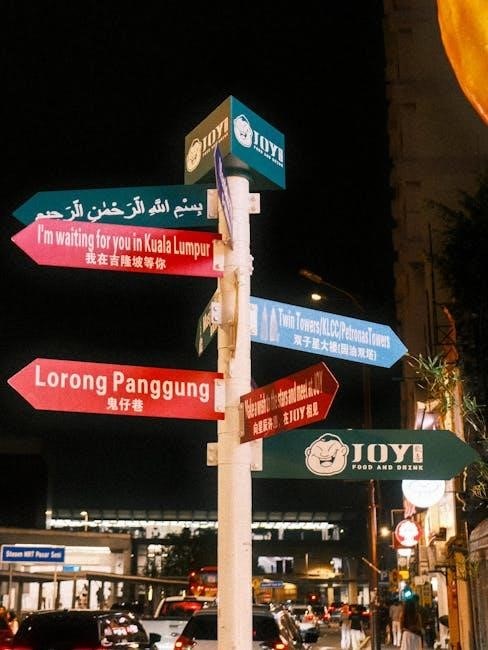
Gameplay Rules
The objective is to form valid sets and runs. Players draw, discard, and strategically align tiles. Turns rotate, and declaring “Mahjong” wins the game.
Objective of the Game
The primary goal in Chinese Mahjong is to be the first player to complete a valid hand. A valid hand consists of four sets of three identical or sequential tiles, plus one additional pair. Sets can be triplets (three identical tiles) or runs (three sequential tiles of the same suit). Players must strategically draw and discard tiles to build their hand while disrupting opponents’ efforts. The game ends when a player declares “Mahjong” upon completing their hand, earning points based on the tiles and combinations they’ve collected. This requires skill, strategy, and attention to the tiles in play.
Turn Sequence and Player Rotation
In Chinese Mahjong, gameplay proceeds clockwise, with each player taking turns in sequence. The player to the right of the dealer draws the first tile and begins. Each turn involves drawing one tile from the wall or picking up a discarded tile, followed by discarding one tile; Players must declare “Mahjong” immediately upon completing a valid hand. The dealer rotates after each round, ensuring fairness. This structured rotation ensures all players have equal opportunities to draw and discard tiles, maintaining the game’s balance and strategic depth. Proper turn sequence is essential for maintaining the flow and integrity of the game.
Drawing and Discarding Tiles
In Chinese Mahjong, each player starts with 13 tiles. On their turn, a player must draw one tile from the wall or pick up a discarded tile that completes a set or run. After drawing, the player must discard one tile from their hand, placing it face-up on the table. Discarded tiles are placed in order, allowing players to track opponents’ moves. Drawing and discarding tiles is a critical part of the game, as it allows players to build their hands strategically while revealing information about opponents’ potential sets. Proper timing and observation of discarded tiles are essential for success.
Forming Sets and Runs
In Chinese Mahjong, a valid hand consists of sets and runs. A set is three tiles of the same rank, while a run is three consecutive numbers in the same suit. Players can also use four-of-a-kind sets or pairs to complete their hands. Sets and runs must be formed from the three main suits (bamboo, circles, and characters) or honor tiles (winds and dragons). A complete hand requires four sets or runs and one pair. Understanding how to form these combinations is crucial for declaring “Mahjong” and winning the game. Proper validation of sets and runs ensures adherence to the official rules.
Scoring Rules
Scoring in Chinese Mahjong is based on the value of tiles and combinations. Points are assigned to sets, runs, and special hands, with multipliers for rare combinations. Penalties apply for incorrect discards or invalid declarations, ensuring fair play and strategic thinking.
Basic Scoring Principles
The foundation of Chinese Mahjong scoring revolves around the value assigned to different tile combinations. Each set or run is scored based on its rarity and complexity; Basic sets, such as sequences or triplets, earn standard points, while special combinations, like dragons or winds, yield higher rewards. Multipliers are applied for exceptional hands, significantly increasing their value. Additionally, penalties are deducted for improper declarations or illegal moves, emphasizing adherence to rules. This system ensures that both skill and strategy are rewarded, making each hand unique and challenging. Mastery of these principles is essential for competitive play and understanding the game’s depth.

Scoring for Different Types of Hands
Scoring in Chinese Mahjong varies based on the type of hand achieved. A standard hand consists of four sets (three tiles each) and a pair, with points awarded for each set’s complexity. Sets of three (triplets) and runs (sequences) earn basic points, while special combinations, such as dragons or winds, award higher scores. Bonus points are given for rare hands like “Heavenly Gate” or “Earthly Hand;” Penalties are deducted for invalid declarations or improper discards. The scoring system emphasizes strategy and precision, rewarding players for creating complex and rare combinations while maintaining adherence to rules. This nuanced approach ensures that each hand’s value reflects its difficulty and uniqueness.
Special Scoring Combinations
Special scoring combinations in Chinese Mahjong include unique hand patterns that offer high points. The “Heavenly Gate” and “Earthly Hand” are rare and highly rewarded. Additionally, hands featuring all dragons or winds, known as “Dragon’s pawn” or “Winds of Fortune,” earn significant points. Players can also score extra for “Flower and Season tiles” when used appropriately. These combinations require precise tile arrangements and are often sought after by experienced players. They add complexity and excitement to the game, offering substantial rewards for skillful play. Understanding these special combinations is crucial for maximizing scores and mastering Mahjong strategy.
Penalties and Deductions
In Chinese Mahjong, penalties and deductions are applied for rule violations. Incorrect declarations, such as claiming a win without a valid hand, result in loss of points. Discarding a tile that completes another player’s set leads to a penalty. Failing to declare “Mahjong” when possible also incurs deductions. These rules ensure fair play and strategic thinking. Penalties vary based on the severity of the mistake, emphasizing the importance of precise tile management and adherence to rules. Players must balance risk and caution to avoid unnecessary point losses while striving for victory.

Winning the Game
To win, a player must form a valid hand with four sets of three tiles and a pair, declaring “Mahjong” to end the game. Strategic planning and skill are essential to achieve this.
Conditions for Winning
A player wins by forming a valid hand consisting of four sets of three tiles and a pair, totaling 14 tiles. The hand must comply with official rules, ensuring all tiles are used. Valid combinations include sequences (three consecutive numbers in the same suit), triplets (three identical tiles), and pairs. Honor tiles, such as winds and dragons, can also be used in sets. Special combinations, like flowering tiles, may enhance scoring. The player must declare “Mahjong” upon forming a valid hand, ending the game. Detailed rules for winning hands are outlined in the Mahjong Competition Rules PDF, covering traditional and modern variations.
Declaring “Mahjong”
Declaring “Mahjong” signifies the successful completion of a valid hand. A player must announce “Mahjong” immediately upon forming a legitimate combination of four sets and a pair, totaling 14 tiles. The declaration must occur before discarding the last tile, ensuring the hand is still playable. The hand is then validated by other players to confirm it meets official rules, such as including valid sets, runs, or pairs. If the hand is deemed invalid, penalties may apply. Detailed procedures for declaring “Mahjong” are outlined in the Mahjong Competition Rules PDF, ensuring adherence to traditional and competitive standards.
Valid Winning Hands
A valid winning hand in Chinese Mahjong consists of 14 tiles, forming four sets (three or four identical tiles) and one pair. All tiles must be used, with no loose tiles remaining. The hand must comply with official rules, such as including valid sets, runs, or pairs. Special combinations, like Kong (four identical tiles), Chow (sequential tiles in the same suit), and Pung (three identical tiles), enhance the hand’s validity. The Mahjong Competition Rules PDF provides detailed guidelines for constructing and verifying winning hands, ensuring adherence to traditional and competitive standards. A valid hand is essential for declaring “Mahjong” and securing a win.
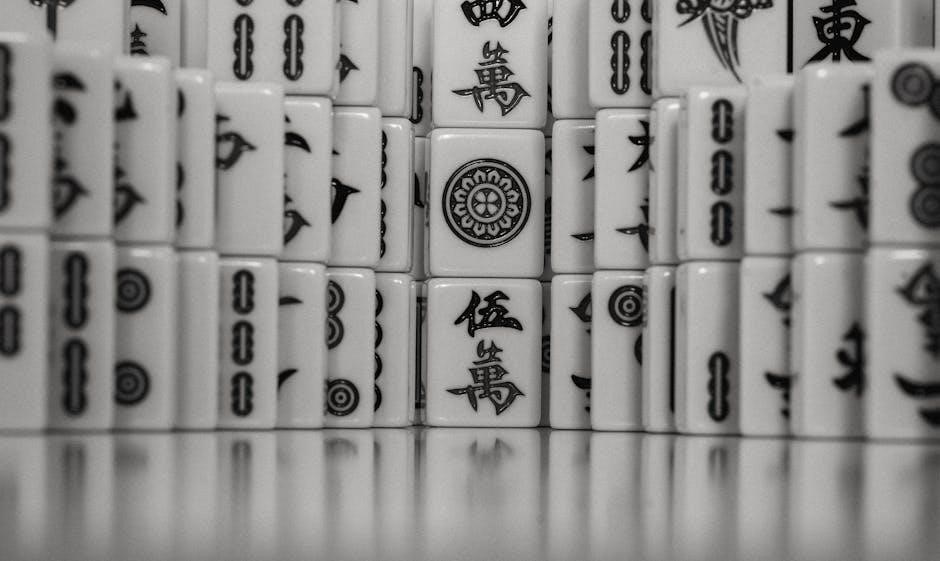
Advanced Strategies
Mastery of advanced strategies enhances gameplay. Reading opponents and calculating probabilities improves decision-making. Tile efficiency and strategic planning are crucial for optimal performance.
These techniques elevate skill levels and increase winning chances.
Reading the Game and Opponents
Reading the game and opponents is a crucial advanced strategy in Chinese Mahjong. By observing discarded tiles and opponents’ behaviors, players can infer their opponents’ hands, helping to avoid giving away valuable tiles. Understanding opponents’ strategies allows for better decision-making and defensive play. This skill involves recognizing patterns and anticipating moves, ensuring players stay competitive. Effective reading enhances overall performance and increases chances of winning.
Mastering this skill takes practice and attention to detail, making it a key component of advanced Mahjong strategy.
Tile Efficiency and Calculations
Tile efficiency and calculations are essential advanced strategies in Chinese Mahjong. Players must manage their tiles effectively, ensuring each discard minimizes opponents’ chances of completing their hands. Probability calculations help determine the likelihood of drawing specific tiles to complete sets or runs. Experienced players track discarded tiles to identify remaining possibilities and adjust their strategies accordingly. Efficient tile management and mathematical calculations enhance decision-making, allowing players to maximize scoring opportunities while minimizing risks. This analytical approach is critical for competitive play and mastering the game’s intricacies, as outlined in detailed guides like the Mahjong Competition Rules PDF.
Defensive Play Techniques
Defensive play techniques are vital in Chinese Mahjong to disrupt opponents’ strategies and reduce their scoring potential. Key strategies include reducing the number of available tiles that opponents need to complete their hands. Players should track discarded tiles to identify which sets or runs are likely being pursued. By discarding tiles strategically, players can force opponents into difficult decisions, limiting their options. Additionally, avoiding predictable discards can make it harder for opponents to anticipate and plan their moves effectively. These defensive tactics, as outlined in resources like the Mahjong Competition Rules PDF, are essential for maintaining control over the game and minimizing opponents’ advantages.

Common Variations
Chinese Mahjong features regional variations like Hong Kong, Sichuan, and Cantonese styles, each with unique adaptations of traditional rules and scoring systems, as detailed in official guides.
Regional Differences in Rules
Chinese Mahjong exhibits diverse regional variations, each with distinct rule sets. The Hong Kong style emphasizes speed and scoring complexity, while Sichuan Mahjong incorporates additional tiles and unique combinations. Cantonese Mahjong follows traditional rules with specific scoring for honors and flowers. These variations are detailed in official PDF guides, such as the Mahjong Competition Rules, which outline the nuances of each style, ensuring players understand local customs and scoring systems. Regional differences enrich the game, offering varied challenges and strategies for enthusiasts.
Modern vs; Traditional Variations
Modern and traditional Mahjong variations differ significantly. Traditional Mahjong, as outlined in the Mahjong Competition Rules PDF, adheres to classic rules with standardized scoring and tile sets. Modern versions introduce innovations like blitz games and online platforms, offering faster gameplay and global competition. These contemporary adaptations retain core principles while enhancing accessibility for new players. The Chinese Mahjong rules PDF provides comprehensive insights into both styles, allowing players to explore and master various formats. This blend of old and new ensures the game remains dynamic and appealing to diverse audiences worldwide.
International Competition Rules
International Mahjong competitions adhere to standardized rules, ensuring consistency across global events. The Mahjong Competition Rules PDF outlines these guidelines, including scoring systems and tile sets. Points are awarded for completing specific hands, with penalties for illegal moves. The international format often blends elements from Chinese, Hong Kong, and Taiwanese versions, creating a unified framework. These rules are widely adopted in tournaments, promoting fair play and skill-based competition. The PDF document serves as a key resource for players seeking to master the global standards of Mahjong, ensuring clarity and uniformity in both amateur and professional settings worldwide.
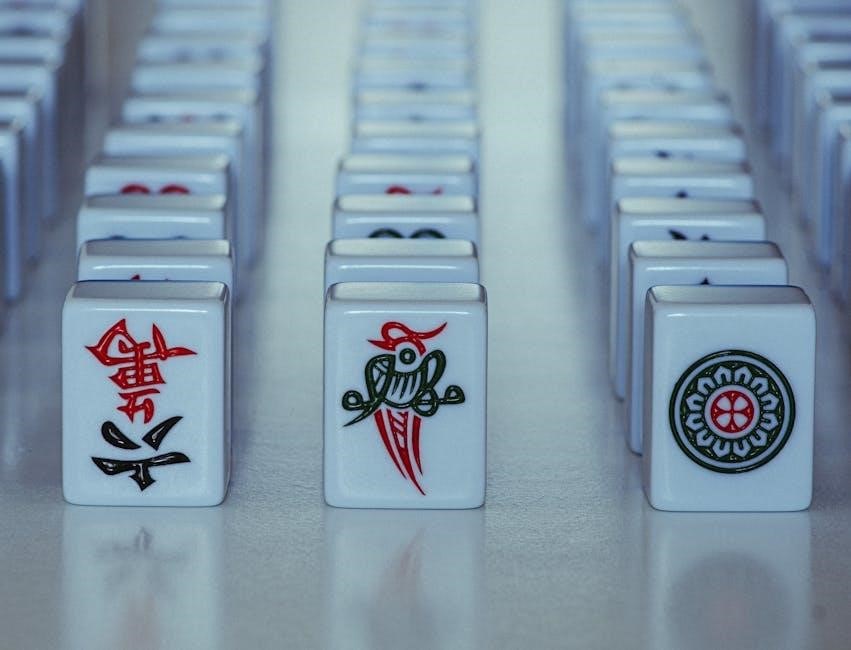
Resources and Learning Tools
Discover comprehensive guides like the Chinese Mahjong Rules PDF, offering detailed instructions, scoring systems, and strategies. Explore books, online tutorials, and practice apps to master the game effectively.
Recommended Books and Guides
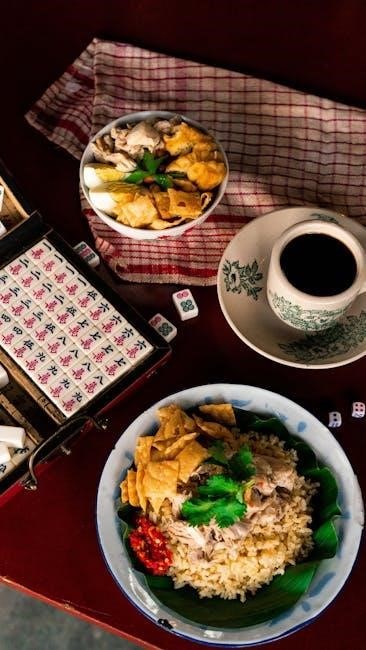
For mastering Chinese Mahjong, consider the Mahjong Competition Rules PDF, a detailed guide outlining official rules and scoring systems. A Guide to Mahjong (Chinese / Official International Rules) is another excellent resource, offering insights into traditional gameplay and strategies. Books like Nicole Wong’s work provide a deep dive into the cultural and diasporic aspects of Mahjong, while Classic MahJong Rules simplifies the game for beginners. These guides cover everything from basic tile sets to advanced scoring combinations, ensuring players of all levels can enhance their skills and understanding of the game.
Online Tutorials and Videos
Online tutorials and videos are excellent resources for learning Chinese Mahjong rules. Platforms like YouTube offer numerous instructional videos, such as the Mahjong Competition Rules series, which break down the game step-by-step. Amazon Prime Video also features guides and gameplays that showcase strategies and scoring systems. Many websites provide video lessons tailored for beginners, covering tile recognition, basic gameplay, and advanced techniques. These visual aids complement written guides like the Chinese Mahjong Rules PDF, making it easier to grasp complex concepts. Whether you’re a novice or an experienced player, online videos offer a dynamic way to improve your skills and understanding of the game.
Practice Apps and Software
Practice apps and software are invaluable tools for mastering Chinese Mahjong. Apps like Tenhou.net and Mahjong Soul provide realistic gameplay experiences, allowing players to practice against AI or real opponents. These platforms often include tutorials and rule guides, such as the Chinese Mahjong Rules PDF, to help users understand the game mechanics. Desktop software like Mahjong Alchemy offers customizable settings to focus on specific skills, such as forming sets or improving tile efficiency. Many apps also track progress, offering insights into strengths and areas for improvement. Whether you’re a beginner or an advanced player, these tools are essential for refining your strategy and staying consistent in your practice routine.
Mastery of Chinese Mahjong requires patience, practice, and a deep understanding of its rules. The Chinese Mahjong Rules PDF serves as an essential guide for both beginners and seasoned players, offering insights into scoring, strategies, and traditional variations. By dedicating time to learning and refining your skills, you can fully appreciate the complexity and joy of this timeless game.
Final Thoughts on Mastering Mahjong
Mastery of Mahjong is a rewarding journey that blends skill, strategy, and cultural richness. The Chinese Mahjong Rules PDF provides a comprehensive guide, helping players understand the game’s intricacies, from basic rules to advanced techniques. Whether you’re a novice or an experienced player, consistent practice and study are key to improving. Embrace the complexity of the game, explore its variations, and enjoy the challenge of outthinking opponents. With dedication, you’ll uncover the depth and beauty of Mahjong, making it a lifelong passion. Use resources like official rulebooks and online guides to refine your skills and fully appreciate this timeless game.
Encouragement to Keep Learning
Learning Chinese Mahjong is a rewarding journey that requires patience and dedication. With the wealth of resources available, such as the Chinese Mahjong Rules PDF, you can deepen your understanding and improve your skills. Don’t be discouraged by early challenges—every mistake is an opportunity to grow. Celebrate small victories, like mastering a new scoring rule or forming a complex hand. Engage with online communities and practice regularly to stay motivated. Remember, Mahjong is not just a game but a cultural treasure that connects people worldwide. Keep embracing the game’s complexity and enjoy the process of becoming a skilled player!




